Maryland Department of Natural Resources links watermen with chefs
By connecting chefs with seafood, the state agency emphasizes the importance of buying local.
It is a refreshing June morning as the sun shines down on Solomons, Maryland, causing the Patuxent River to sparkle in its reflection. A crew of four Washington, D.C., area chefs stands on a wooden dock alongside Steve Vilnit, the Director of Fisheries Marketing at the Maryland Department of Natural Resources (DNR), eagerly awaiting the arrival of our captain, Bruce Abbott, and his fishing vessel.
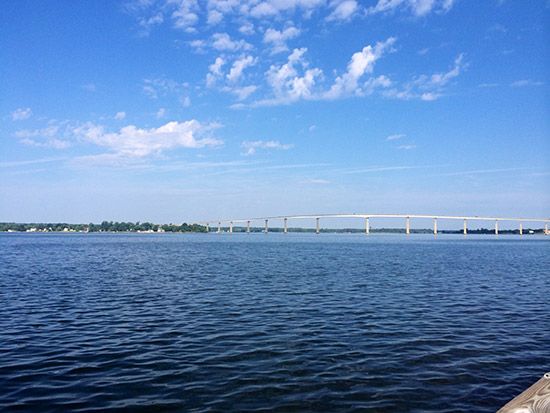
Vilnit coordinates educational trips intended to connect local chefs with living resources. By creating these experiences, he is able to spread the word about the importance of buying local seafood and illustrate the hard work that goes into moving fresh seafood from the ocean to the dinner table.
The O’Dark Thirty appears in the distance and sidles up to the dock for the crew and guests to climb aboard. Once everyone is situated, Abbott heads east, out of the mouth of the Patuxent and into the main stem of the Chesapeake Bay. About 20 minutes go by before the boat comes to a halt next to one of roughly 1,500 pound nets in the Bay. Pound nets are used by watermen to harvest large quantities of a specific fish species, like perch, menhaden, croaker or striped bass. Vilnit describes the net and why it is so popular: “The way a pound net works is by playing off of a fish’s natural instinct to head to deeper water when they feel threatened. The net funnels them into the center where they are trapped,” he said.
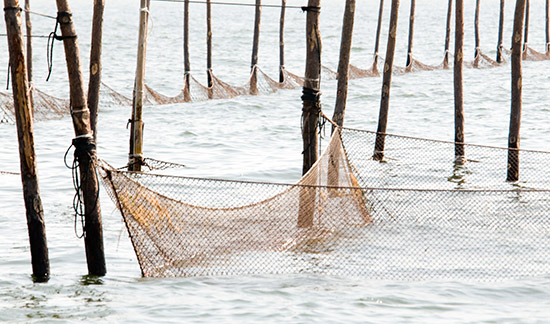
Image courtesy Jay Fleming/DNR
Vilnit explained that, from a sustainability standpoint, pound nets are a great fishing method. Despite its high bycatch rate, the majority of the fish in the net are kept alive. “The fish are just swimming around in the net until the fishermen come. What they’ll do when they pull the net is, they start cinching it up so it pulls all the fish together and congregates them and then they scoop them out one-by-one with a dip net and release all the bycatch.”
The journey continued towards Maryland’s Eastern Shore, stopping next for a live demonstration of trotlining. Trotlines are a favored method for catching blue crabs in the Bay, but can only be used in its tributaries, as they can pose a navigational hazard for boats; crab pots are standard gear for those harvesting crabs in the main stem.
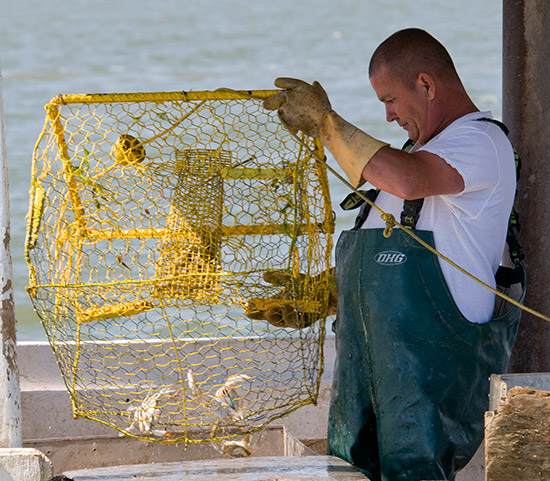
Image courtesy Jay Fleming/DNR
After the demonstration, Vilnit passed around the clawed critters for an up-close-and-personal anatomy lesson. “The apron—or [flap] on the belly—of the female crab is rounded like the Capitol dome and the apron on the male looks like the Washington Monument. You can also see a difference in the claw color: the females have what they call fingernail polish—it’s the red tips on the claws—versus the males that have blue claws,” Vilnit said.
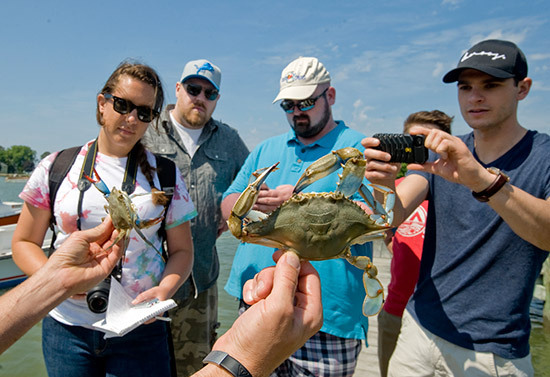
Image courtesy Jay Fleming/DNR
The final leg of our trip took us to Barren Island Oysters, a sustainability-minded, high-end oyster company based out of Hoopers Island, Maryland. Owner and founder Tim Devine launched the farm slightly more than a year ago and has already seen tremendous success.
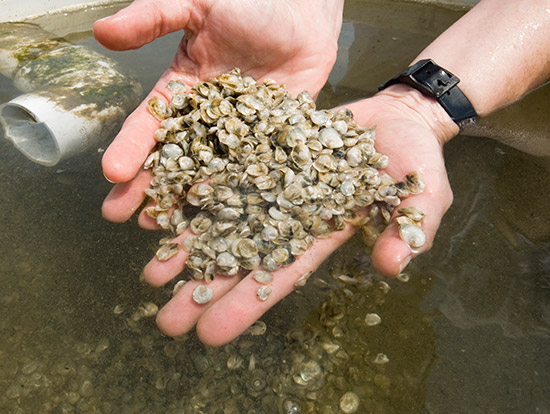
Image courtesy Jay Fleming/DNR
Devine’s company is an authentic example of the power of proper research and collaboration. “I had a lot of time to do some market research as I waited the 18 months to get my permits for this business,” Devine said. “In the meantime I was shooting photography for a magazine that took me around to different restaurants, so I would ask the chefs, ‘Hey, what do you want?’” What he found was a high demand for the disease-resistant, triploid oyster.
Listening to the calls from the chefs, Devine began to grow triploid oysters in an unorthodox fashion: chipping off new shell growth forced the oysters to not only grow stronger but also develop a deep, uniform, cup-shaped shell. “I think my biggest advantage is that I didn’t know anything coming into this, so I had no history as to how all these people [watermen] do this. Because this is such a new industry and there are many new markets for a premium oyster, I wasn’t stuck in any old ways of farming,” Devine explained.
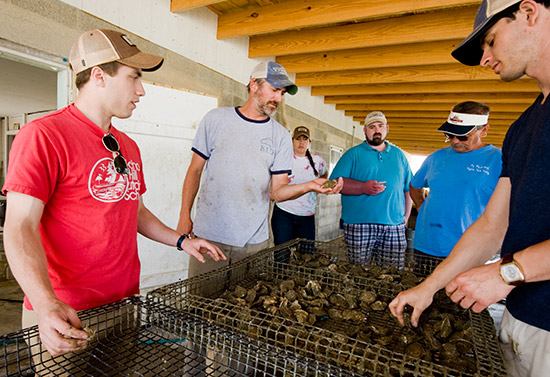
Image courtesy Jay Fleming/DNR
By openly communicating with chefs, Devine was able to discover a niche market for premium oysters that would meet these chefs’ requests. Vilnit hopes his educational tours will create more relationships of this kind. And for those who cannot get out on the water, signing onto the True Blue and Oyster Pledge programs is a positive way that chefs and restaurateurs can show their establishment’s commitment to fresh, locally harvested seafood.

Comments
There are no comments.
Thank you!
Your comment has been received. Before it can be published, the comment will be reviewed by our team to ensure it adheres with our rules of engagement.
Back to recent stories